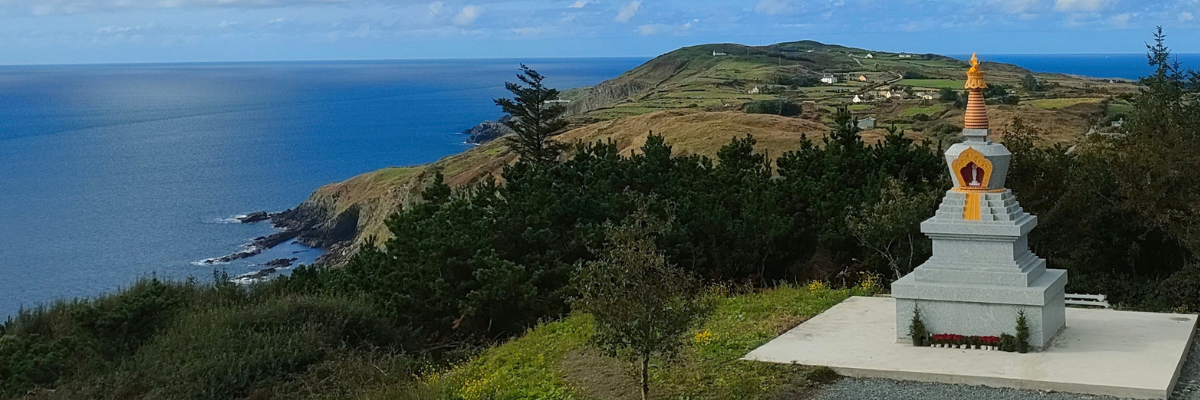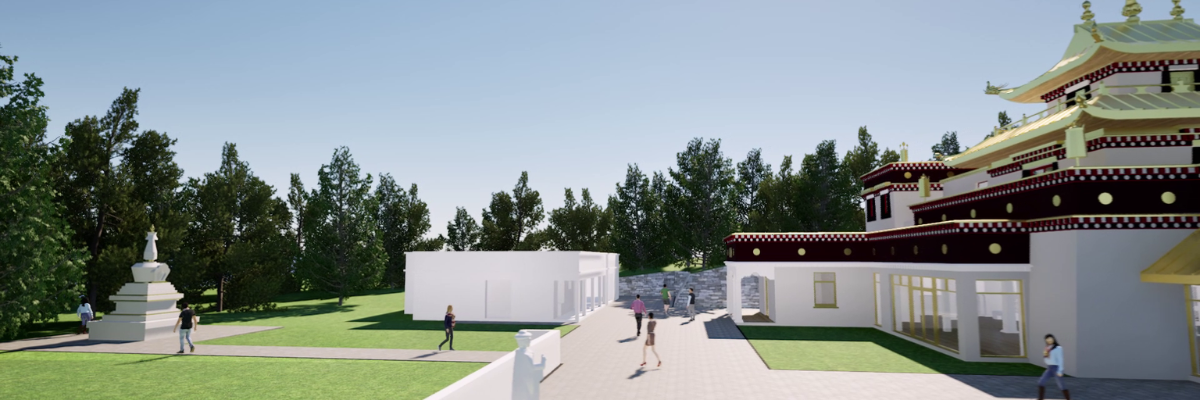The Dzogchen Beara Temple Stupa
Dedicated to all living beings, that they may awaken to their true inner nature and discover the lasting peace and happiness that is beyond all suffering.
Last July we opened the Dzogchen Beara temple. This extraordinary achievement was made possible thanks to the generosity of the Rigpa Sangha and our many friends around the world. This year we embarked on the building of the last of six new stupas built by Rigpa all around the world.
Last month (September 2025) Tulku Ridgzin Pema Rinpoche began filling the Stupa with sacred texts, blessed substances, and special relics of many great Masters. Rinpoche then consecrated the stupa on Monday the 8th, marking the completion of this amazing project.
Not only is building this stupa an extraordinary accomplishment and blessing for the world in itself, it also marks the completion of the Dzogchen Beara temple, adding a representation of the Buddha’s mind (which a stupa is) to the representations of Buddha’s body (the statues) and Buddha’s speech (the scriptures of the “kangyur” and “tengyur” which are on either side of the shrine).
We are incredibly grateful for all the support that we received over the years that has allowed us to come to this important point in time.
You can still make an auspicious connection with this sacred project by making a donation here.
All gifts are deeply appreciated. If you prefer to make a bank transfer you will find our account details here. For more information about the project in general, on giving or availing of potential tax benefits in your region, please contact us by email: fundraising@dzogchenbeara.org
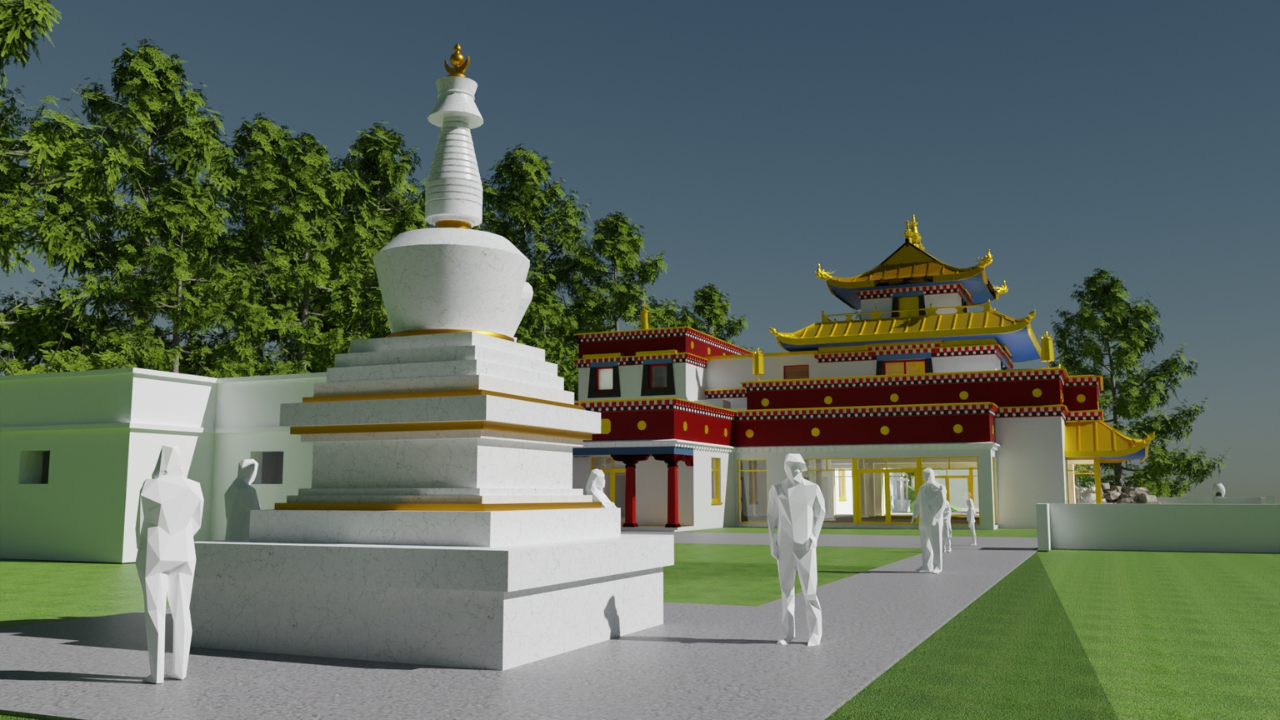
The project has involved the building of three stupas at the main Rigpa Centres, dedicated to all living beings, so that they may awaken to their true nature and discover within themselves the lasting peace and happiness that is beyond all suffering.
In 2024, a Great Enlightenment stupa was built in Lerab Ling, an All-Victorious Stupa was built at Dharma Mati in Berlin and an Enlightenment Stupa was built at Sukhavati Spiritual Care Centre, Bad Sparrow in Germany. The Dzogchen Beara stupa will take the shape of the Descent from Tushita Heaven Stupa.
The positive energy of stupas comes from two aspects, their form and the items with which they are filled. We are extremely fortunate to be guided in this historic project by two Lamas uniquely knowledgeable and experienced in these sacred sciences. Orgyen Tobgyal Rinpoche advised on the stupa’s design and location, and Tulku Rigdzin Pema Rinpoche will supervise its filling and assembly.
The Dzogchen Beara stupa will contain countless relics of the greatest masters of our lineage, including Guru Rinpoche, Jigme Lingpa, Longchenpa, Patrul Rinpoche, Do Khyentse, Dudjom Rinpoche as well as those of Sogyal Rinpoche and Mayum Tsering Wangmo, and many, many sacred and blessed items prepared at Lerab Ling by Rigpa’s monks and nuns and a team of volunteers.
The first stupa was the Buddha’s cremation mound and every stupa is considered to be his representation, a living enlightened presence bringing causes for good health, peace, prosperity and harmony in the environment, not only around its location, but also to the whole world. Stupas are said to have the power of “liberation upon seeing”, planting the seed of enlightenment in the mindstream of all who encounter them. Their design, proportions and contents are laid-out in great detail by the ancient scriptures.
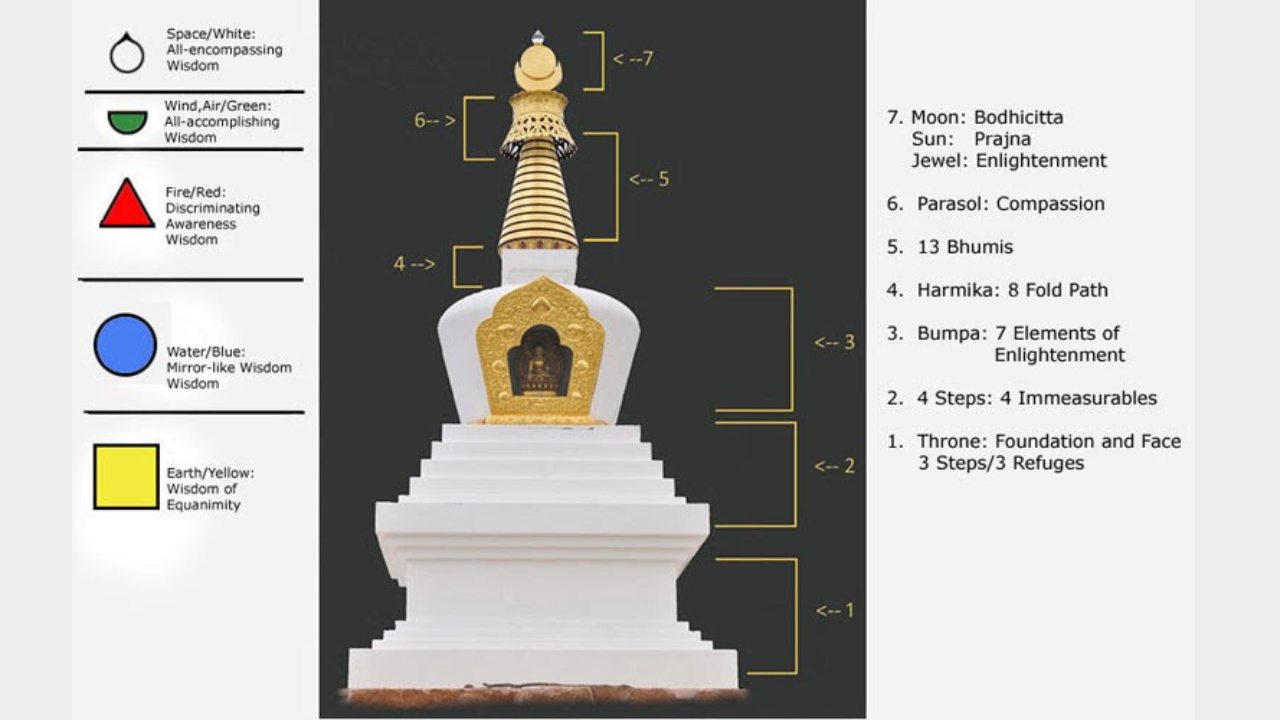
A stupa’s shape represents the Buddha, sitting in meditation posture. His crown is the top of the spire; his head is the square at the spire’s base; his body is the vase shape; his legs are the four steps of the lower terrace; and the base is his throne.
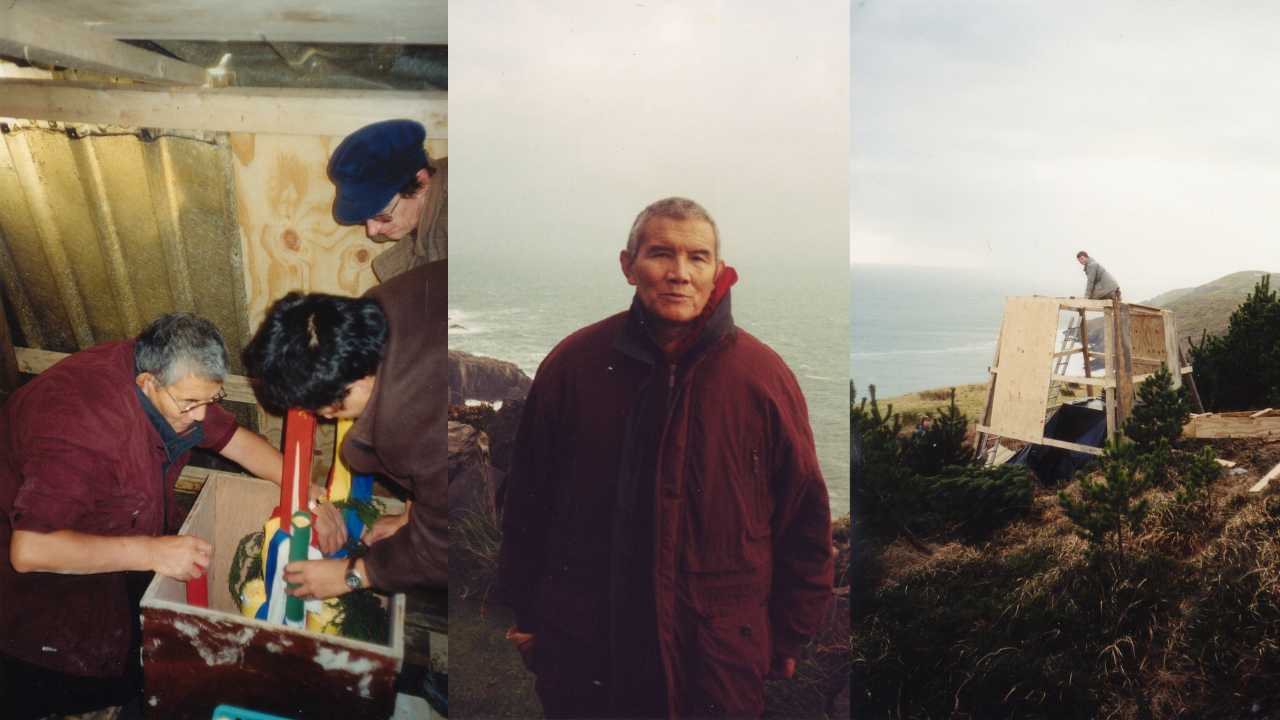
– This first stupa at Dzogchen Beara was built in 1997, over 11 weeks by Tulku Pegyal Rinpoche
After her death, the Buddha’s mother, Mayadevi, was reborn in Tushita Heaven. Following his enlightenment, to repay her kindness, the Buddha ascended to Tushita, to share his realisation with Mayadevi. Descent from Tushita Heaven Stupas commemorate Buddha’s subsequent return from the celestial realms, to continue his teachings on earth.
We are immensely grateful to Rigpa’s monks and nuns who have been carefully preparing these materials for many months. With a team of volunteers they have printed millions of mantras and prayers, washed them with saffron water and rolled them. They have also made many thousands of tsatsas – moulded plaster offerings in the shape of small stupas – which will also be sealed within the stupa when it is assembled.
The Dzogchen Beara stupa will be 6 metres tall and sculpted in light-grey granite. It is being made by a team in Portugal, who are trained by great Masters from the East and are famed for the quality of their stone and craftsmanship. The stupa will arrive in pieces by sea before being assembled and filled at Dzogchen Beara.
Granite has been prized for building since ancient times. A volcanic rock and one of the world’s hardest materials, it is found in many of Ireland’s megalithic wonders, including standing stones and burial mounds. Granite was used in building the Egyptian pyramids, Roman temples and the Brihadeeswarar Temple in India, and iconic buildings of more recent times, including Trinity College, the GPO and the Four Courts in Dublin.
The stupa will serve as a place of pilgrimage for generations to come, providing support for their spiritual practice, offerings and circumambulations.
The stupa was ordered in December 2024 with the hope that it will be ready to ship in eight to 10 months. We hope it’ll be shipped by end of May arriving in June
The total costs of production assembly and landscaping, of which we are aware at this moment, will be €252,500. We do not have a complete overview of the costs of transport to Dzogchen Beara, but we will publish updates as soon as we know more.
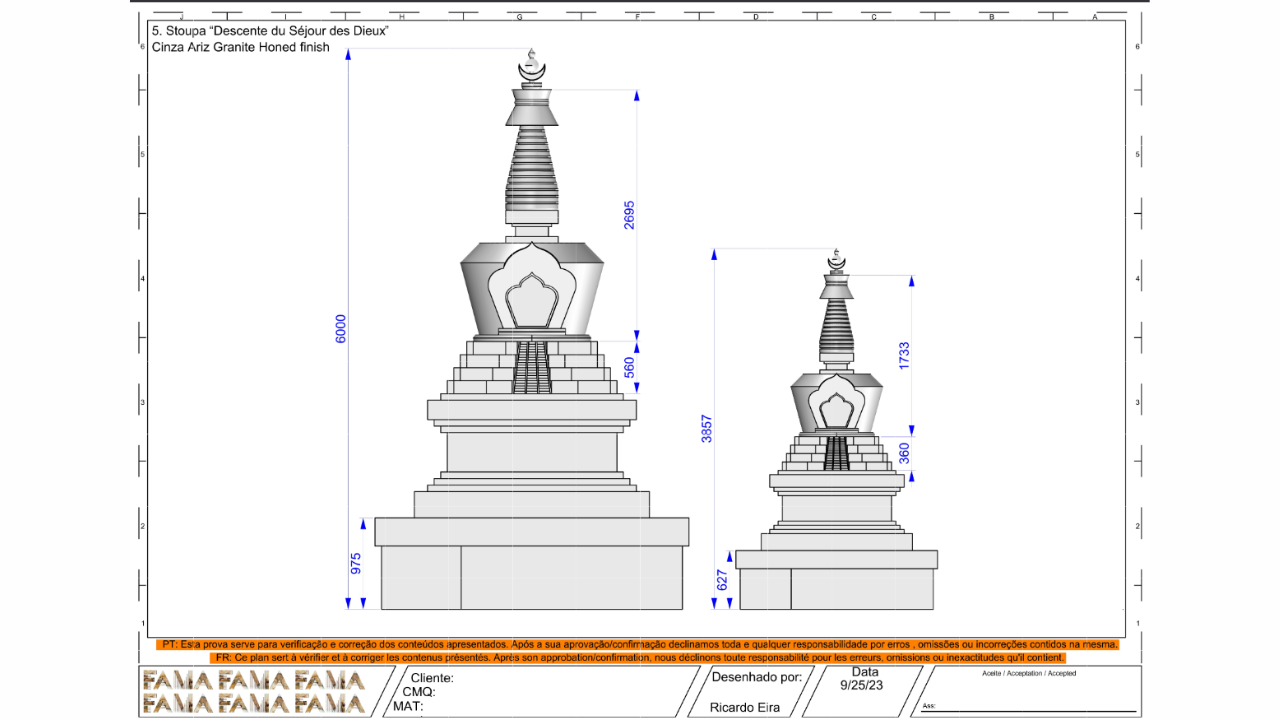
When all the parts arrive in Dzogchen Beara – hopefully by mid-summer this year – they will be assembled with the utmost care and attention to detail. The stupa will be filled by a team of trained volunteers while rituals associated with each phase of assembly are performed.
